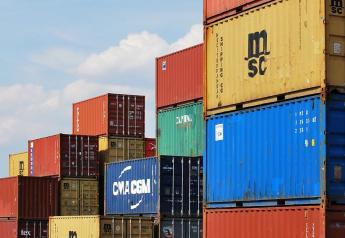Murphy: Down and Dirty

At first glance, the decision of the National Organic Standards Board last week to allow hydroponic and aquaponic production methods to be marketed as Certified USDA Organic might seem logical. If no chemicals or synthetic fertilizers are used, why wouldn’t the resulting hydroponic produce, for example, be considered organically grown?
But the board’s decision was vociferously opposed by a coalition of organic farmers and producers, who lobbied intensely, according to news reports, urging USDA to restrict certification to soil-based systems of farming.
“[The decision] was sad, because the rally speeches and all the testimonies of the farmers were so moving,” Dr. Linley Dixon, lead scientist at the Cornucopia Institute, an industry watchdog organization supporting the ban, was quoted on the Organic Authority website. “Everyone did such a good job explaining the situation, [but] it didn’t matter. It was very sad. There were a lot of tears.”
The 15-person board voted eight to seven to reject the proposal that would have restricted organic certification to “traditional” farmers, according to news reports. There are approximately 100 certified organic hydroponic operations in the U.S.
So why the controversy? What’s the difference if crops are grown organically in soil or in a water-based medium? Isn’t that merely a matter of a different medium?
Soilless is Soulless
Not at all, many organic farmers argued. Indeed, this issue has been debated within the organic industry for many years. Those against the continued certification of soilless systems argue that such techniques violate the basic principles of organic, which, as Abby Youngblood, executive director of the National Organic Coalition, explained to National Public Radio, “are really about soil health, regenerating the soil.”
Dixon agreed, noting that hydroponic systems do not cycle nutrients back into the soil to build soil health, an important tenet of organic agriculture. Indeed, most marketing and advertising for organic foods depict pastoral scenes of farmsteads with amber waves of grain, contented cows grazing on green forage and tidy orchards bursting with ripe apples or cherries.
The family farm, old-school image of hardworking growers toiling to deliver healthier foods, while simultaneously healing the land, is key to the organic movement’s positioning.
The argument in favor of organic hydroponics, of course, centers on efficiency, and in fact, those systems can be energy-efficient and sustainably operated. Hydroponic systems also do not normally require the addition of pesticides, even those permitted by organic rules, due to the fact that such crops are grown under controlled conditions indoors.
As far back as 2010, organic farmer coalitions were badgering USDA to institute a moratorium on the organic certification of all new hydroponic and aquaponic operations. In a letter to then-USDA Secretary Tom Vilsack, they argued that, “We believe it is incumbent upon USDA to accept the NOSB’s 2010 recommendations to prohibit soilless hydroponic vegetable production as certified organic. The recommendation specifically states that hydroponic and aeroponic ‘cannot be certified as organic growing methods…’ ”
Part of the dispute is related to the fact that farmers seeking organic certification must undergo rigorous soil testing in order to be certified organic. Hydroponic and aquaponic systems are getting a free pass around those criteria, the farmers said, claiming that it confuses consumers when there is no distinction between the farming methods and their importance to the health of the larger food system.
Leaving aside the issue of whether soil itself is essential for foods to be identified as organically grown, the organic farm coalitions may have a point, albeit not on the dirt vs. no-dirt issue.
Along with the environmental impact of organic methods of crop and livestock production, the other important element is the opportunity to maintain agricultural diversity and support access to the business for family and small-scale growers. Because organic produce, meat and dairy command premiums in the marketplace, it’s possible for small farms to be profitable at a scale that would be near-impossible if production revolved around hybrid corn and GMO soybeans.
Hydroponic operations, on the other hand, tend to require sufficient capitalization that if such production methods are to be scaled up, they’re more than likely to be sustainable only by well-funded corporate interests. Leaving aside the optics of food grown with miles of plastic piping inside what amounts to a translucent airplane hanger, the last thing that organic agriculture needs is to continue on the path of corporate domination of the market, which is already well underway.
Certainly, population growth alone, not to mention the ongoing loss of prime farmland to development, argues for expansion of hydroponics as a supplement to conventional food production. Forget exports for a moment; by mid-century the U.S. is going to have to ramp up its domestic ag output just to keep pace with the growth in the American population, and hydroponics need to play a role in that effort.
In the end, it seems to me the solution is for organic farmers opposed to indoor agriculture to make their case the old-fashioned way: One customer at a time.
If soil health is so critical to environmental protection and food sustainability — and it is — that ought to be an easy argument to make.
And win.
Editor’s Note: The opinions in this commentary are those of Dan Murphy, a veteran journalist and commentator.







